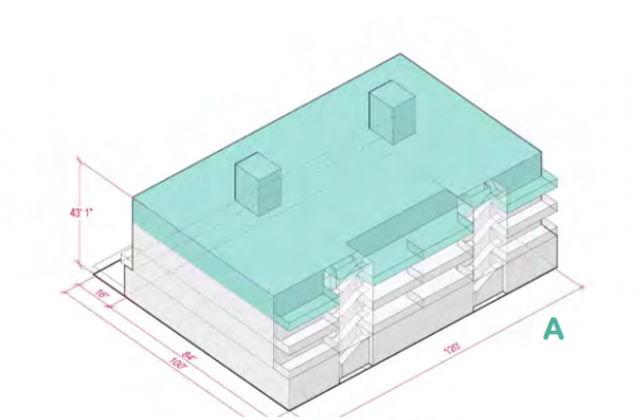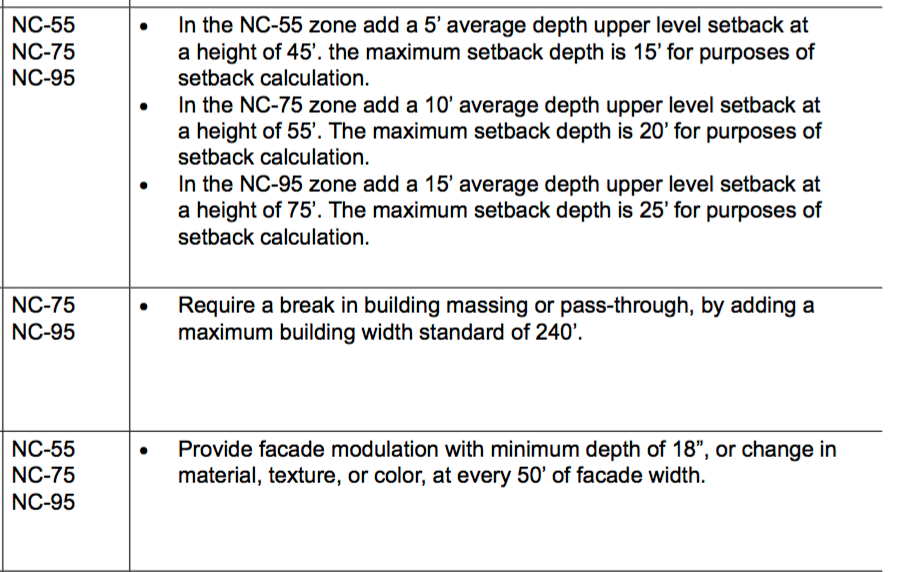Mandatory Inclusionary Zoning Isn’t Just Bad Economics, It is Bad Design
If I’ve told you once, I’ve told you a thousand times: trying to make something cheaper by making it more expensive to produce is folly. More specifically, trying to make housing less expensive by adding fees, fines, and inclusionary requirements the way the City’s proposed Mandatory Inclusionary Zoning (MIZ) scheme does won’t make housing less expensive. The City’s brand of MIZ called Mandatory Housing Affordability (MHA) will add costs in the form of fees and additional costs that will make many projects infeasible, and when they do work, it will because the price goes up for renters and home buyers. And in the end, the scheme is illegal. As if all that was not enough, the MHA proposal will cause housing to be less efficient and mandate bad design.
If you take a look at page 63 of the recent document dump by outgoing Mayor Burgess and Councilmember Rob Johnson, you’ll see that a whole bunch of new prescriptive rules impacting housing design are being added to the upzone proposal, creating hassles for architects and developers trying to deliver affordable housing products to needy renters and buyers. Remember how we challenged Councilmember O’Brien on this whole scheme, reminding him that he and his colleagues has creating a bunch of damaging set backs and unit size boosting requirements in the low-rise legislation he pushed through Council? Remember how we knew O’Brien would have to cave and capitulate to angry neighbors (who ironically hate his guts anyway because of his noblise oblige on people living in cars)? And remember how O’Brien got caught up in a mess saying he’d upzone over here, but not so much over there and then backtracked on Facebook?
I sure do.
Here’s how he solved the problem.
The proposed upzones in Neighborhood Commercial (NC) zones will have to:
Ensure light and air access to public rights of way, and compatibility of street facing building scale, as height limits are increased.
and
Encourage human scaled buildings, and compatibility of in ll development with context.
and
Encourage design interest and human scale in large scale building facades.
We’ve heard this pablum, garbage language before haven’t we: “light and air” and “human scale” is code for project killing set backs, constraints on the size of buildings and lot coverage, and ultimately, a recipe for bigger and fewer and more expensive apartments and houses.
These upper level setbacks are now prescribed in all zones along with new requirements for material and the ever pointless, “modulation.” These are for NC zones but the same rules are being applied to low-rise zones (page 41) and commercial zones too (page 63).
Why is all this a problem for design? Minimum standards drive exactly that, the minimum. In order to break out of all these limiting setbacks departures will be needed, and those departures will depend on the already bloated and wasteful design review process, made even worse by Councilmember Johnson this year. Most of these new rules are just repeats of design review guidelines about height bulk & scale anyway.
It is simply breathtaking how 9 people can, without really trying all that hard, set the housing economy on a course for complete disaster. First, screw up things by imposing new, infeasible, inflationary, and illegal exactions on the production of housing desperately needed by people living and moving to the city. Then add a dash of prescriptions that will ensure more constraints and difficulty in designing the new housing being taxed, fined, and feed. The Council and Mayor are making a an already forced sale and purchase of FAR even more onerous. How much worse can this “bargain” get?



